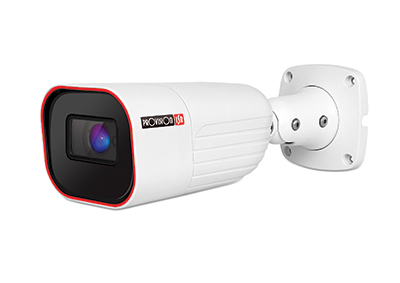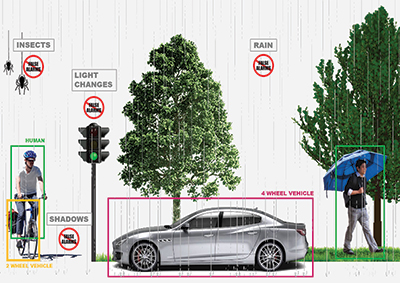
DDA stands for detect, distinguish and alert, an additional feature in the world of security that is part of artificial intelligence (AI) developed by Provision ISR. The security industry is changing fast and AI is changing the rules. It’s improving the world of security by increasing the accuracy of detection while reducing false alarms.

In surveillance, the phrase video analytics refers to capturing visual data from network cameras and detecting real-time events. But when we look at CCTV, there are two main video analytics, pixel-based video analytics and AI-based video analytics.
Pixel-based video analytics: These are standard video processing, detecting anomalies in the frame by using colour differences in close groups of pixels. One disadvantage is that false alarms get generated by irrelevant objects, such as animals and shadows.
AI-based video analytics: Advanced video processing algorithms which allow you to detect specific events, objects and scenarios. This outshines pixel-based video analytics because moving objects in the scene like animals and shadows won’t affect detection.
If we look at how the artificial intelligence technology works in combination with the DDA video analytics, it allows the system to distinguish between human beings, 4-wheel vehicles and 2-wheel vehicles. This technology gives you the opportunity to trigger alarms or send you push notifications only when a desired object is detected. Thanks to this, it reduces the false alarms caused by shadows, light changes, animals and shaking trees.
Different DDA analytics options
The DDA analytics has different options for you to choose from depending on what you’re looking to use the technology for. Three examples of options are the DDA line crossing, DDA sterile area and DDA humans/vehicles counting. Let’s go over each one of those three to give you a better insight into what makes them special with examples of scenarios you would use them in.

The first one is the DDA line crossing. The way it works is the user draws a line in the scene and sets both the crossing direction and crossing permissions. This gives you the ability to choose what object may cross the line and an object not permitted will trigger an alarm. If we look at an example, if you place a camera at a university campus and only allow humans to cross the line set out by the user and not vehicles, an alarm will trigger and the user will receive a push notification every time a vehicle crosses, but not a human.
For the DDA sterile area, the user draws an area in the scene and sets access permission for vehicles and/or people. The best example for this is when you place a camera in a parking garage and drawing the area within a no parking area. Detecting and distinguishing the object as a human, even though the event is registered, will not generate an alarm. However, when the system detects and distinguishes the object as a car, which is prohibited from entering the limited area, it will generate an alarm.
Third is the DDA humans and vehicle counting. The user will position the camera at a gate entrance/exit to get real-time monitoring of humans or vehicles coming and going. If you place your camera at the entrance of a parking area, the system will monitor and count every vehicle entering the area and once the maximum number has been reached, a push notification will be sent to the user.
As we can see, this technology goes over and above what has previously been on the market. The reason for this advancement is due to increased development in the AI sector, giving yourself and your business more options with surveillance. This will give your clients next level security, advancing their current system and having it work for them, offering the best results.
| Tel: | +27 21 946 3344 |
| Email: | [email protected] |
| www: | www.provisionisr.co.za |
| Articles: | More information and articles about Provision ISR SA |

© Technews Publishing (Pty) Ltd. | All Rights Reserved.